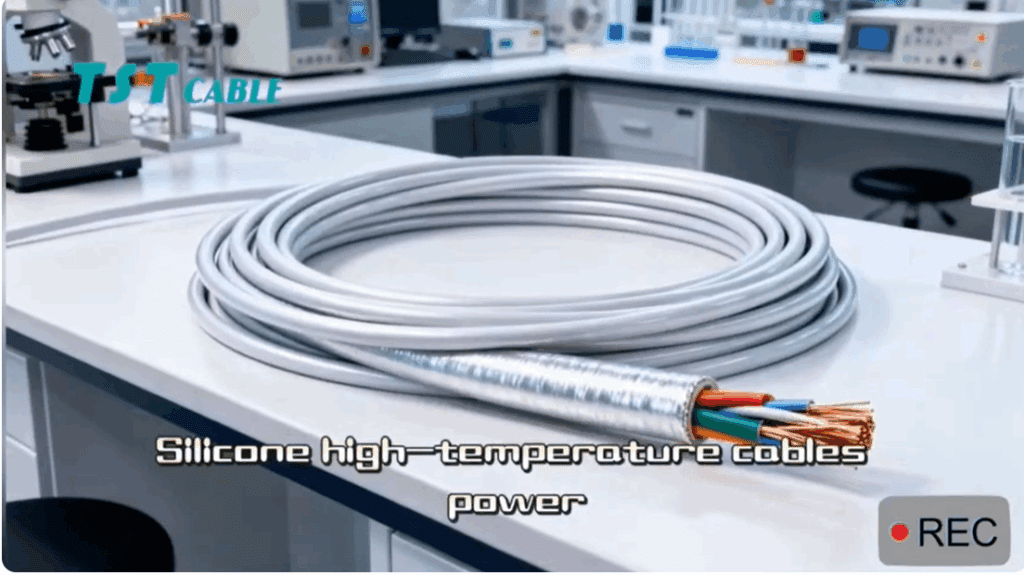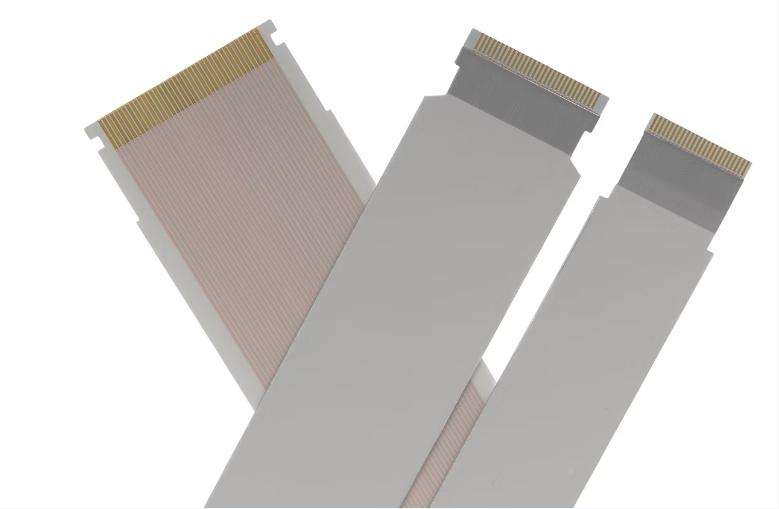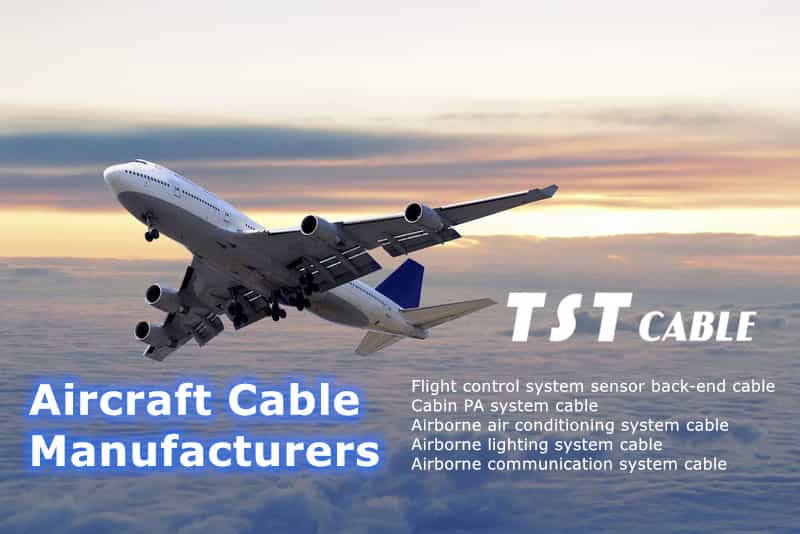If you are looking for Flexible Soft Silicone Battery Wire Cable 6 AWG wire, but you are not sure what you need, you may need to find answers to some related questions before you can reasonably choose the right cable model.

TST CABLES offers a variety of high-quality American-made cables and wires, including but not limited to general rail transportation cables, wind power, nuclear power, building wires, marine battery cables, welding cables, instrumentation and alarm cables, and many other types of specialty cables. Next, let’s dig into and answer some of the most common Google questions about 6AWG wire.
6 AWG (American Wire Gauge) wire is a commonly used medium-thick wire that is widely used in electrical installations, especially when higher current carrying capacity is required. Below TST CABLES has compiled some common questions and answers about 6 AWG wire:
Frequently Asked Questions and Answers
What is the maximum current carrying capacity of 6 AWG wire?
According to the National Electrical Code (NEC), the standard maximum continuous current carrying capacity of 6 AWG copper conductors under free air flow conditions is about 55 amps. For aluminum conductors, it is lower, about 40 amps. The actual application should be determined according to the specific ambient temperature and other conditions.
What applications can 6 AWG wire be used for?
6 AWG wire is usually used for large electrical connections in homes or commercial buildings, such as high-power devices such as air conditioners, water heaters, dryers, etc., and can also be used for shorter distance main power line connections.
What is the safe operating temperature of 6 AWG wire?
The safe operating temperature depends on the insulation material. Common PVC insulation materials generally have an operating temperature range of -40°C to 75°C, while higher-grade materials such as THHN/THWN-2 can withstand temperatures up to 90°C.
How to choose a suitable circuit breaker for use with 6 AWG wire?
For 6 AWG copper conductors, a standard choice is to use a 60-amp circuit breaker for safety. However, the specific circuit breaker rating should follow local electrical codes and be calculated and installed by a professional electrician.
Does the length of the 6 AWG wire affect the current carrying capacity?
Yes, the longer the wire, the greater the resistance, so the voltage drop will be greater at the same current. When designing longer circuits, you need to consider voltage drop and may need to use thicker wires.
What is the significance of the color of 6 AWG wire?
Color coding can help identify the function of the wire. For example, in the United States, black usually indicates the hot end (live), white indicates neutral, and the bare copper wire is usually the ground wire. However, the specific meaning of the color sometimes changes depending on the application, so it is best to refer to the manufacturer’s instructions.
How much does 6 AWG wire cost?
Prices vary due to market fluctuations and different brands. Generally speaking, 6 AWG copper wire costs more than 6 AWG aluminum wire. You can consult your local hardware store or online retailer for the latest quotes when purchasing.
What are the sizes of 6 AWG wire?
The diameter of 6 AWG copper wire is about 4.1 mm (0.162 inches), while the diameter of aluminum wire is slightly larger, about 4.5 mm (0.177 inches).
Is 6 AWG wire suitable for outdoor use?
6 AWG wire can be suitable for outdoor use depending on its insulation type. For example, UV-stable and waterproof insulation materials, such as solar-stable PVC or rubber-based insulation, are suitable for outdoor environments. When used outdoors, appropriate protective measures should also be considered, such as pipe-through or underground installation.
Can 6 AWG wire be used to connect solar panels?
Yes, 6 AWG wire is often used in the DC line of a solar system, especially when the current is high or the line is long. The specific specification of wire to be used depends on the design of the system and the required current carrying capacity.
How should 6 AWG wire be handled at the joint?
Appropriate wire connectors or solder terminals should be used at the joint, and the connection should be firm and reliable. If it is in a humid or harsh environment, it is also necessary to consider using waterproof connectors or taking other protective measures.
Does 6 AWG wire require special tools for installation?
Installing 6 AWG wire usually requires some professional tools, such as wire strippers, wire crimpers, and professional scissors for cutting wires. Ensuring that the right tools are used can improve work efficiency and ensure safety.
Can 6 AWG wire be connected to wires of other specifications?
When you need to connect 6 AWG wire to other wires, you should use a suitable connector or terminal and make sure that the current carrying capacity of the connection point is not less than the rating of the smallest wire.
Does 6 AWG wire meet international standards?
The AWG system used in the United States is a standard unique to the United States. In other countries and regions, different standards may be used, such as the European cross-sectional area unit (square millimeters). In multinational projects, it is necessary to confirm whether the wire specifications meet local electrical standards.
What brands of 6 AWG wire are recommended?
There are many well-known wire brands that provide 6 AWG wire, such as Southwire, American Wire, and General Cable. When choosing a brand, you should consider factors such as product quality, durability, and price.
What is the service life of 6 AWG wire?
The service life of wires depends on many factors, including installation quality, usage environment, and maintenance. Good installation and maintenance can keep the wires for a long time. Generally, high-quality wires can be used for decades.
In what types of buildings can 6 AWG wires be used?
6 AWG wires are suitable for various types of buildings, including residential, commercial, and industrial facilities. They are often used in situations where a higher current carrying capacity is required, such as large appliance connections, main power lines, etc.
How much does 6 AWG wire weigh?
6 AWG copper wire weighs about 12 pounds (about 5.44 kilograms) per thousand feet, while 6 AWG aluminum wire weighs much less, about 4.4 pounds (about 2 kilograms) per thousand feet. These values are for reference only, and the actual weight may vary slightly due to differences in the manufacturing process.
Can 6 AWG wire be bent?
6 AWG wire can be bent, but proper tools and techniques need to be used to avoid damaging the wire. Using a bending tool or bending stick can help form a smooth bend and reduce stress inside the wire.
What should I pay attention to when using 6 AWG wire in a high-temperature environment?
When using 6 AWG wire in a high-temperature environment, you should choose an insulation material that is resistant to high temperatures, such as silicone insulated wire. In addition, you should ensure that the wire is not directly exposed to heat sources to prevent overheating and damage.
Can 6 AWG wire be used for underground wiring?
6 AWG wire can be used for underground wiring, but it must comply with local electrical code requirements. It is usually necessary to run the wires through appropriate conduits or use direct buried cables for additional protection.
What precautions should be taken when using 6 AWG wire in wet environments?
When using 6 AWG wire in wet environments, ensure that the wires are waterproof and all joints are properly sealed. Waterproof junction boxes or caps can be used when necessary.
What precautions should be taken when using 6 AWG wire in dusty environments?
When using 6 AWG wire in dusty environments, ensure that the wires and joints are adequately protected to prevent dust from entering and causing short circuits or other failures. Using enclosed junction boxes and dust caps can provide additional protection.
Can 6 AWG wire be used in electric vehicle charging stations?
Yes, 6 AWG wire is often used in electric vehicle charging stations, especially when higher current carrying capacity is required. The specific specification of wire used depends on the power output and wiring requirements of the charging station.
Is 6 AWG wire prone to aging?
Although the material and insulation materials of the wire are durable, the wire may still deteriorate over time. Regularly inspect the wire for signs of wear, cracks or other damage, and replace the problematic parts in a timely manner.
Hopefully, these questions and their answers will help you better understand the applications and characteristics of 6 AWG wires.
If you have a need for custom cables, need further technical support or custom cable solutions, you can visit the TST CABLES official website or feel free to send an email to a professional cable engineer at TST Cables (email: lixiangchao@testeck.com, please state your country, your industry, and your specifications and quantity in the email).
Also available in:
English





